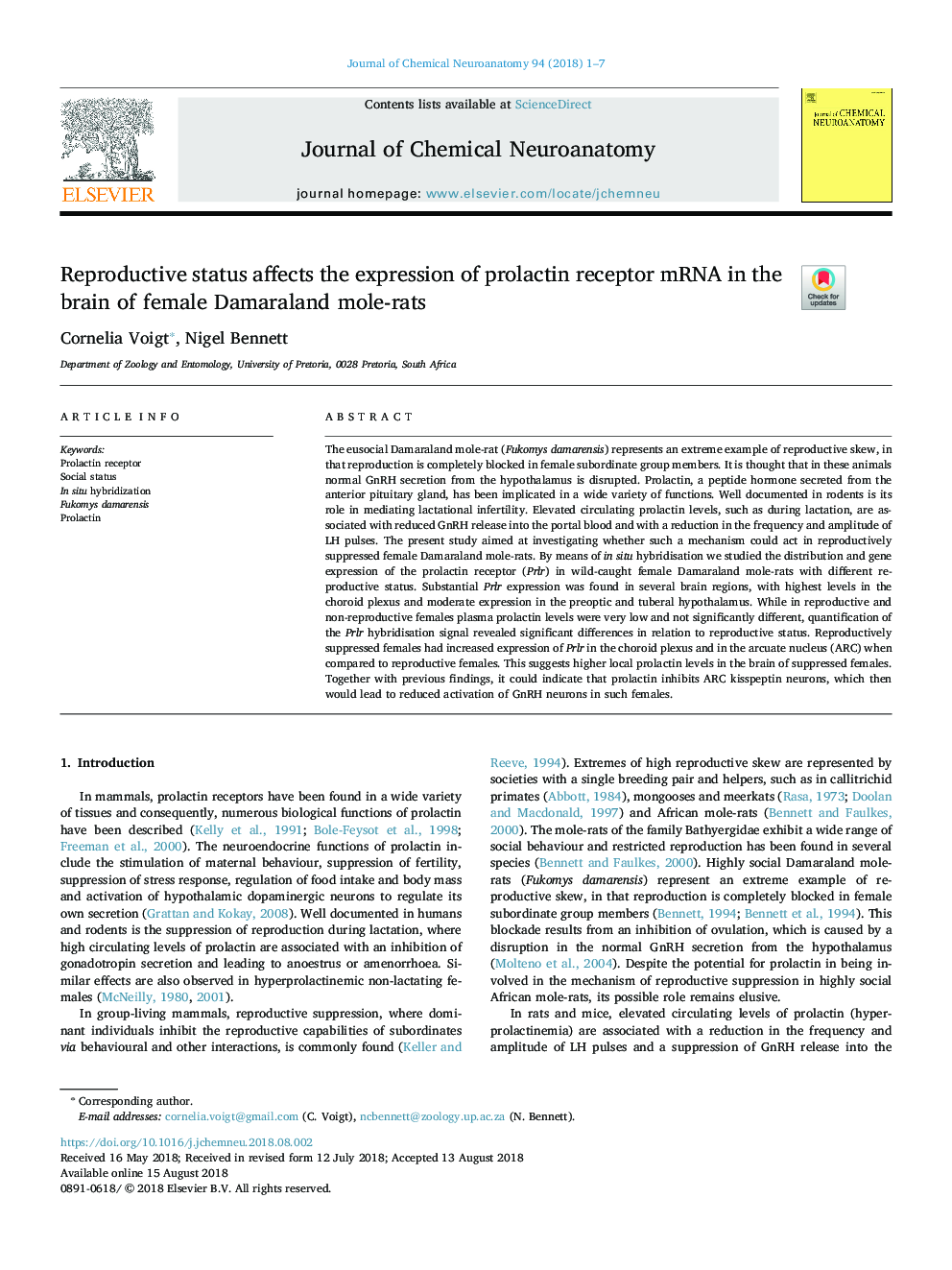| Article ID | Journal | Published Year | Pages | File Type |
|---|---|---|---|---|
| 8943757 | Journal of Chemical Neuroanatomy | 2018 | 7 Pages |
Abstract
The eusocial Damaraland mole-rat (Fukomys damarensis) represents an extreme example of reproductive skew, in that reproduction is completely blocked in female subordinate group members. It is thought that in these animals normal GnRH secretion from the hypothalamus is disrupted. Prolactin, a peptide hormone secreted from the anterior pituitary gland, has been implicated in a wide variety of functions. Well documented in rodents is its role in mediating lactational infertility. Elevated circulating prolactin levels, such as during lactation, are associated with reduced GnRH release into the portal blood and with a reduction in the frequency and amplitude of LH pulses. The present study aimed at investigating whether such a mechanism could act in reproductively suppressed female Damaraland mole-rats. By means of in situ hybridisation we studied the distribution and gene expression of the prolactin receptor (Prlr) in wild-caught female Damaraland mole-rats with different reproductive status. Substantial Prlr expression was found in several brain regions, with highest levels in the choroid plexus and moderate expression in the preoptic and tuberal hypothalamus. While in reproductive and non-reproductive females plasma prolactin levels were very low and not significantly different, quantification of the Prlr hybridisation signal revealed significant differences in relation to reproductive status. Reproductively suppressed females had increased expression of Prlr in the choroid plexus and in the arcuate nucleus (ARC) when compared to reproductive females. This suggests higher local prolactin levels in the brain of suppressed females. Together with previous findings, it could indicate that prolactin inhibits ARC kisspeptin neurons, which then would lead to reduced activation of GnRH neurons in such females.
Related Topics
Life Sciences
Biochemistry, Genetics and Molecular Biology
Biochemistry
Authors
Cornelia Voigt, Nigel Bennett,
